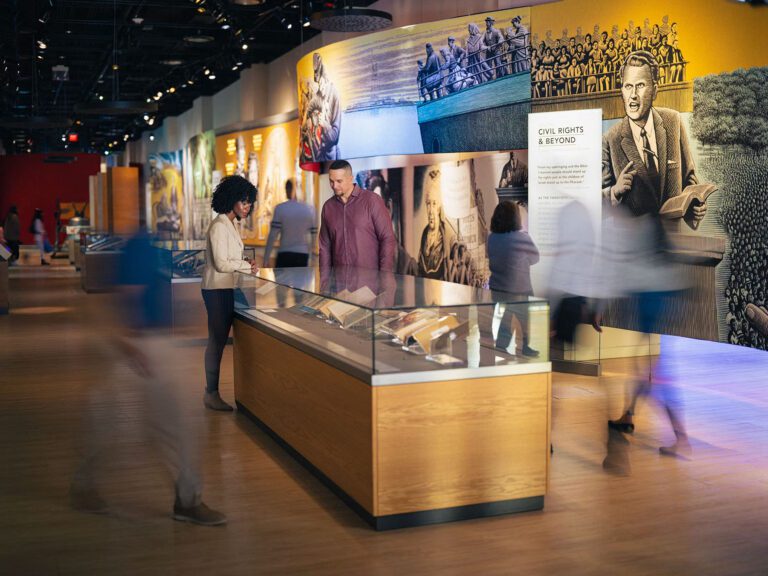The exhibition, which features fragments of the Dead Sea scroll, the oldest known copy of biblical text, at the Bible Museum in Washington, DC, on November 22, 2025, offers American visitors an unusual opportunity to see central artifacts in Judaism and early Christian history.
The show, Dead Sea Scrolls: The Exhibition, is organized in collaboration with Israeli ancient stations and the subway works. Runs until September 2026, it includes more than 200 artifacts from the Israeli National Treasure Collection, in addition to a rotating display of scroll fragments.
The Dead Sea scroll was first discovered in 1947 by Bedouin shepherds in a cave near Qumran, near the Dead Sea. Texts written in parchment and papyrus in Hebrew, Aramaic and Greek are from the Gregorian calendar of the 3rd century BC to the 1st century. They include parts of almost every book in the Hebrew Bible, along with hymns, prayers and community rules, providing scholars with a direct connection to Jewish life and faith in the Second Temple era.
“The discovery of the Dead Sea scroll has returned to the oldest biblical references for a thousand years,” Olit Shamir of the Israeli Ancient Bureau said in a statement. “They revolutionized biblical scholarships by getting a glimpse into how the Bible was understood and practiced centuries ago.”
The Washington exhibition will showcase the scrolls in three rotations to protect fragile materials. The first one will feature some of the books of Genesis, Job, Poetry Sal, and War Scrolls, from November 2025 to February 2026. Later rotation highlights texts such as scrolls of the Great Poem Sal, numbers, lament, documents from Isaiah, Jubilee, and Damascus.
In addition to the scrolls, the exhibition presents archaeological discoveries from all over Israel. These include magdalene stones excavated in 2009 at a first-century synagogue near the Sea of Galilee, and fragments of fishing boat timber excavated from the lake during the 1986 drought.
Other works include items from the Pilgrim Road that led to Jerusalem Temple, Ostraka of Masada (carved ceramic shards), and a scroll wrapper from Qumran. Digital installations and historical photographs explain the methods archaeologists have used to study and preserve vulnerable materials.
Museum officials say the exhibition will be the only place to hold Dead Sea scrolls during its current tour, marking the 75th anniversary of the scroll discovery. “It is a very rare and unique opportunity to see the oldest copies of Bible fragments along with artifacts that help us better understand the world of the Bible,” said Bobby Duke, the museum’s chief president’s officer.
Educational programming will accompany the show with lectures and activities designed to help visitors engage in the cultural, historical and religious context of the scroll. Children can participate in interactive scavenger hunts through a museum focused on discovering and preserving scrolls.
Scrolls have previously been exhibited in Jerusalem, Europe, and several US cities, but their limited display schedules and strict conservation rules mean they will not be made public. For many scholars and faith communities, the Washington exhibition represents an opportunity to explore the continued shaping of ancient manuscripts’ modern understandings of sacred texts.
